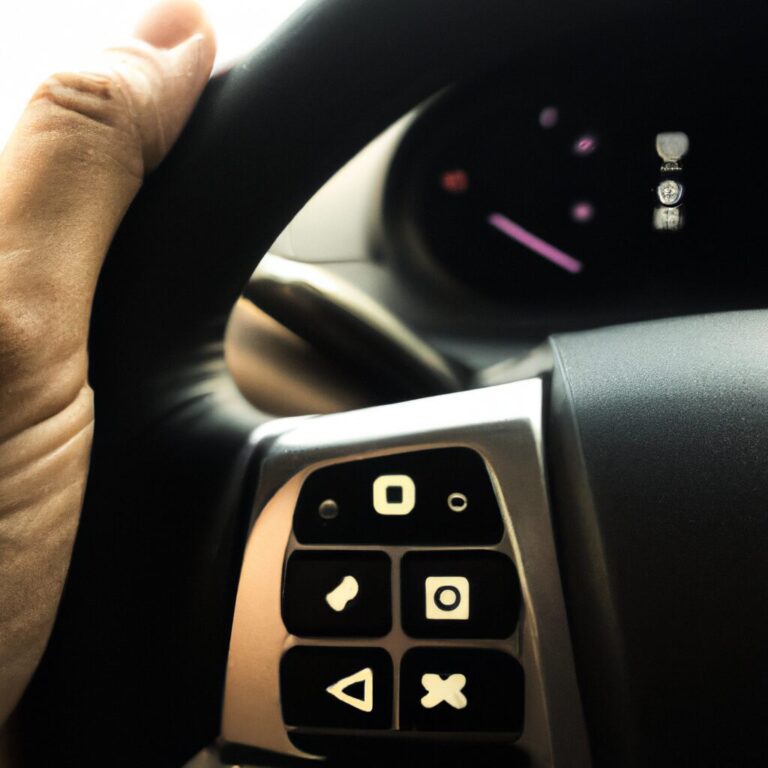How to Do a Fuel Injection Service
To do a fuel injection service, follow these steps: gather necessary tools, locate fuel injectors, disconnect fuel lines, remove injector rail, replace or clean injectors, reassemble and test for proper function. Fuel injection service helps improve fuel efficiency and engine performance, preventing issues caused by clogged or dirty injectors.
Is your car not performing as efficiently as it used to? Does it lack power when you accelerate? These issues may be caused by clogged or dirty fuel injectors. A fuel injection service can help address these problems by cleaning or replacing the injectors, ensuring proper fuel flow and improving engine performance.
We will guide you through the steps to successfully perform a fuel injection service on your vehicle. By following these steps, you can save money on costly repairs and improve your car’s fuel efficiency.

Credit: highlinecarcare.com
Preparing For Service
Learn how to perform a fuel injection service to keep your car running smoothly. This essential maintenance task involves cleaning and testing fuel injectors to optimize fuel delivery and engine performance. By following the right procedures, you can ensure your vehicle operates at its best.
- Socket wrench set
- Safety goggles
- Rubber gloves
- Ensure engine is completely cool
- Disconnect battery

Credit: www.docmotorworks.com
Inspecting The System
Inspecting the system is an essential step in performing a fuel injection service. This step helps identify any issues or potential problems within the system, ensuring that it functions at optimal levels. This section will guide you through the process, focusing on two key areas: checking for leaks and examining the fuel filter.
Check For Leaks
Start by inspecting the fuel system for any signs of leaks. Leaks can occur in various parts of the system, such as the lines, connectors, or injectors. Conduct a visual examination, looking for stains, wet spots, or any fuel odor that could indicate a leak. Additionally, use a flashlight to closely inspect areas that are hard to see.
If you notice any leaks, it’s important to take immediate action. Leaks not only lead to fuel wastage but can also pose a fire hazard. To fix a leak, identify the source and address it accordingly. This may involve tightening loose connections or replacing damaged components.
Examine Fuel Filter
The fuel filter plays a crucial role in preventing contaminants from entering the fuel system. Over time, it can become clogged or dirty, impeding the flow of fuel to the injectors. To examine the fuel filter, follow these simple steps:
- Locate the fuel filter, which is usually positioned along the fuel line.
- Remove the filter from its housing, referring to the vehicle’s manual for guidance if needed.
- Inspect the filter for any signs of debris, dirt, or discoloration. If it appears to be excessively dirty or clogged, it may be time for a replacement.
- If the filter is reusable, clean it thoroughly using a fuel system cleaner or a gentle detergent. Ensure all contaminants are removed before reinstalling it.
- When reinstalling the filter, ensure it is properly secured and the fuel lines are correctly connected.
Regularly examining and maintaining the fuel filter will help ensure a consistent flow of clean fuel to the injectors, optimizing engine performance.
Performing The Service
Learn to perform a fuel injection service by following these steps: 1. Remove the fuel pump relay and drain the fuel system. 2. Connect a fuel pressure gauge and injector cleaner to the system. 3. Run the engine to flush out any debris and improve fuel efficiency.
Performing the Service Performing a fuel injection service is an essential maintenance task that helps keep your vehicle running smoothly and efficiently. If you notice rough idling, poor acceleration, or decreased fuel efficiency, it might be time to give your fuel injection system some attention. In this guide, we will walk you through the steps to perform a fuel injection service, ensuring your engine continues to perform at its best.Locate Fuel Injection System
The first step in performing a fuel injection service is to locate the fuel injection system in your vehicle. You can usually find it near the engine, often connected to the air intake system. Refer to your vehicle’s manual or consult professional advice to ensure you find the right components.Use Fuel Injection Cleaning Kit
Once you’ve located the fuel injection system, it’s time to gather the necessary equipment – a fuel injection cleaning kit. These kits usually include a cleaning solution and specialized tools designed to remove any buildup or deposits that may be hindering your fuel injectors’ performance. To begin, start by carefully following the instructions provided with your specific fuel injection cleaning kit. It’s important to use the right amount of cleaning solution and follow the recommended procedure to ensure optimal results. Next, you’ll need to connect the cleaning kit to the fuel injection system. This is typically done by attaching the kit to the fuel rail or directly to the fuel injectors themselves. Again, refer to your vehicle’s manual or seek professional advice to ensure correct and safe attachment. Once the kit is properly attached, start the engine and allow it to run at idle. The cleaning solution will flow through the fuel injectors, breaking down any deposits and allowing them to be safely carried out of the system. Let the engine run for the recommended duration specified in the cleaning kit instructions. After the cleaning process is complete, carefully disconnect the cleaning kit and any associated attachments. Before starting your vehicle, it’s crucial to double-check and ensure that everything is disconnected and secure, preventing any potential damage. Performing a fuel injection service can greatly improve your vehicle’s performance and fuel efficiency. By locating the fuel injection system and using a fuel injection cleaning kit, you can effectively remove harmful deposits and allow your fuel injectors to operate at their best. Regularly maintaining your fuel injection system will contribute to a smoother and more efficient driving experience. Ensure you consult your vehicle’s manual and follow professional advice for any specific instructions or safety precautions required for your particular vehicle.Testing And Final Checks
When it comes to conducting a fuel injection service, the testing and final checks play a crucial role in ensuring the proper functioning of the system. Following the service procedures, it is essential to run engine and check for leaks and verify smooth operation.
Run Engine And Check For Leaks
After completing the fuel injection service, start the engine to detect any potential leaks. Inspect all the connections and components for any signs of leakage.
- Look for fuel leaks around the injectors and fuel lines.
- Check for vacuum leaks that can affect the engine performance.
Verify Smooth Operation
Once the engine is running, pay close attention to its performance to ensure smooth operation. Listen for any abnormal sounds or vibrations.
- Accelerate and decelerate to check for responsiveness.
- Observe idle speed stability to confirm proper fuel delivery.
These testing and final checks are vital to prevent any potential issues and ensure the fuel injection system functions optimally post-service.
Maintenance Tips
To keep your fuel injection system in top condition, regular maintenance is crucial. Here are some essential maintenance tips that will help you ensure the optimal performance of your vehicle’s fuel injection system.
Regular Cleaning Schedule
Regular cleaning of the fuel injection system is essential to prevent clogging and carbon buildup. Schedule a bi-annual fuel injection cleaning to ensure the smooth flow of fuel and maintain the efficiency of the system. Consider using high-quality fuel injector cleaner as part of your maintenance routine to keep the injectors free from debris.
Monitoring Fuel Efficiency
Regularly monitor your vehicle’s fuel efficiency as a measure of the fuel injection system’s performance. A sudden decrease in fuel efficiency may indicate a potential issue with the fuel injection system, requiring immediate attention from a qualified technician.

Credit: www.firestonecompleteautocare.com
Frequently Asked Questions On How To Do A Fuel Injection Service
Can You Do Your Own Fuel Injection Service?
Yes, you can do your own fuel injection service. However, it is recommended to consult a professional to ensure proper maintenance and avoid any damage to your vehicle.
What Is Involved In A Fuel Injection Service?
A fuel injection service involves cleaning and maintaining the fuel injectors to ensure proper fuel flow and engine performance. It helps remove carbon deposits and improve fuel efficiency.
How Long Does A Fuel Injector Service Take?
A fuel injector service typically takes around 1-2 hours to complete. It involves cleaning or replacing the fuel injectors to optimize engine performance.
How Much Should A Fuel Injection Cleaning Cost?
Fuel injection cleaning typically costs between $50 to $80. Prices can vary based on the service provider and the extent of cleaning required. Regular maintenance can help improve engine performance and fuel efficiency.
What Is A Fuel Injection Service?
A fuel injection service is a maintenance procedure to clean and optimize fuel injectors for better engine performance.
How Often Should I Get A Fuel Injection Service?
It is recommended to get a fuel injection service every 30,000 miles or as indicated by your vehicle’s manual.
What Are The Benefits Of A Fuel Injection Service?
A fuel injection service can improve fuel efficiency, reduce emissions, restore engine power, and prevent potential engine issues.
Conclusion
Keeping your vehicle’s fuel injection system well-maintained is crucial for optimal performance. By following these steps, you can easily conduct a fuel injection service at home. Regular maintenance will help improve fuel efficiency and extend the lifespan of your vehicle.
Stay proactive in caring for your car’s engine!

